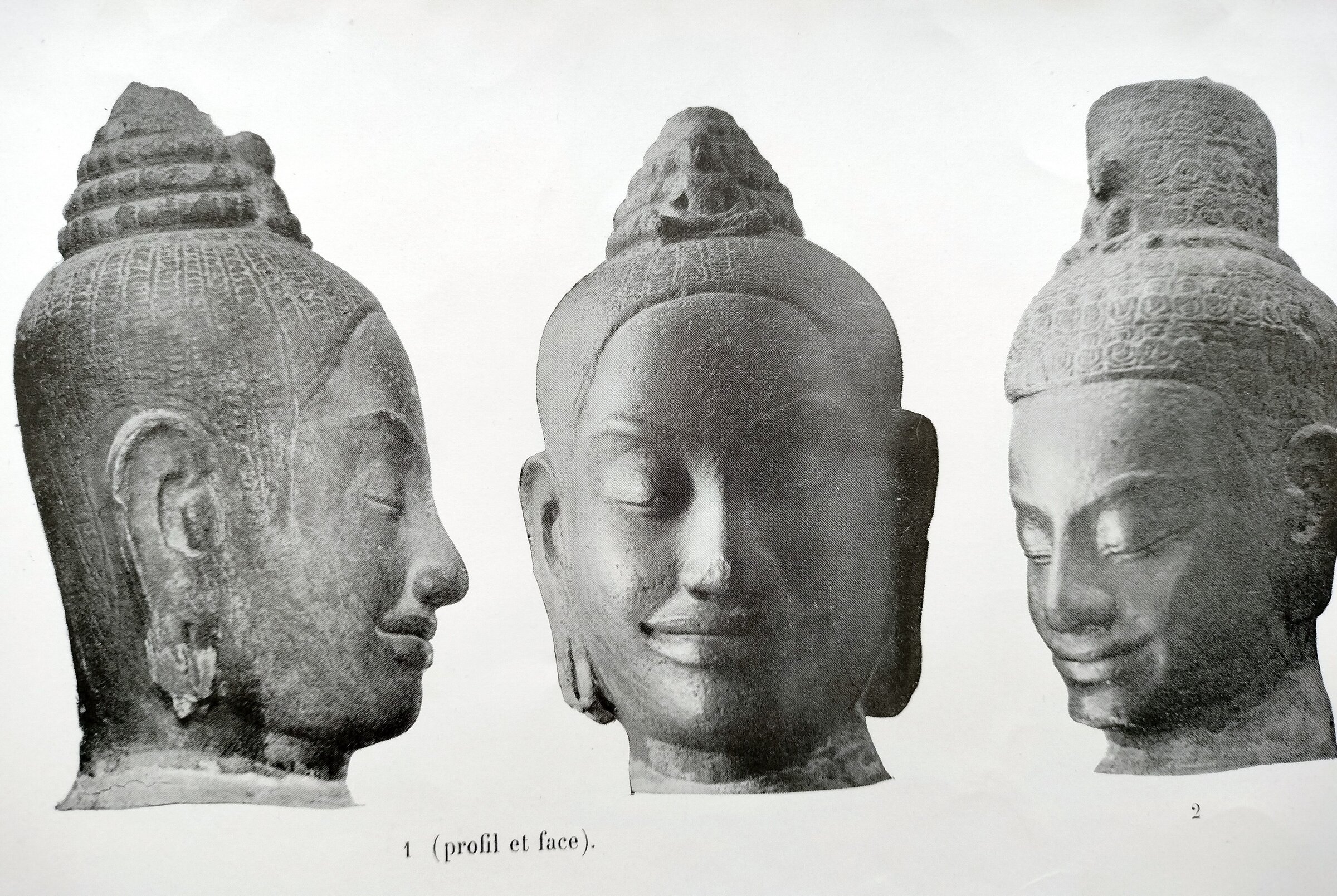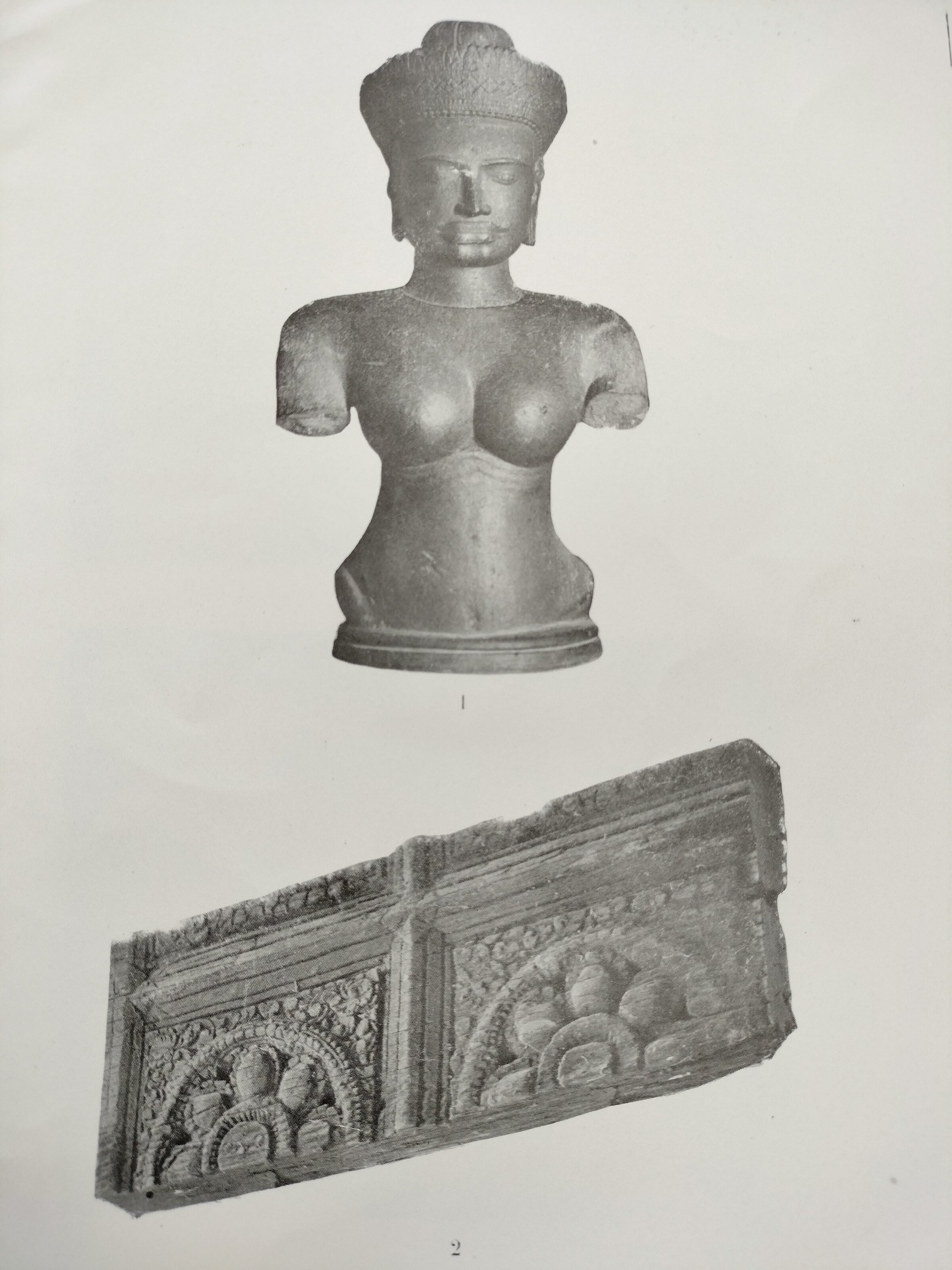Matériaux pour servir a l'etude de l'Art Khmer
by Alfred Foucher
Brief notations on the personal collection of Khmer Art gathered by Jean Moura in his Moissac house before 1879.

- Format
- paperback
- Publisher
- offprint from Bulletin de la Commission archéologique de l'Indochine, 1913,Leroux, Paris | 8 plates
- Published
- 1914
- Author
- Alfred Foucher
- Pages
- 19
- Language
- French
Indianist and archaeologist active in Afghanistan, Alfred Foucher was not directly a Khmerologist, but his closeness to Louis Finot led him to take some interest in Khmer art and civilization, and his first mission for the Société Asiatique, in 1907, took him to Java. His wife, Eugénie ‘Ena’ Bazin, a philologist and researcher herself, was very keen on Southeast Asian art, and together they visited Borobodur during the couple’s stint in Asia, from 1918 to 1926 (Foucher was then 53 years of age, Eugénie 29). In 1925, when traveling to Japan from Afghanistan, they spent almost two weeks (17−29 December) in Angkor.
This short study was based on Louis Finot and Lunet de Lajonquiere’s visit to the personal residence of Jean Moura after the latter’s death, at the request of the Commission archéologique de l’Indochine.
‘Image d’apothéose”, Khmer head statue with unknown date and origin.
‘Four-armed female deity, bronze color, H: 0,85 m, maybe a Lakshmi?’ (author’s comments)
1. Female torso, H: 0,53 m. 2. ‘Wooden ceiling fragment (one of the few recovered), probably used to hide the ill-repaired intrados of a vault; MM. Finot and De Lajonquiere recognized the motive as similar to ceiling ornaments in Angkor Wat main portico.’ (author’s comment).
In Alfred Foucher’s and Eugénie Bazin-Foucher’s complete bibliography established in 2009, this publication is given reference number 54bis, as the second part of entry 54: “54: « Matériaux pour servir à l’étude de l’art khmèr » [sic], Bulletin de la Commission archéologique de l’Indochine 1912, p. 215 – 218 et pl. x‑xiv.[Analyse de diverses sculptures cambodgiennes : « I. Bronzes » appartenant à M. Chambert et à Auguste Barth, et « II. Deux têtes de statues en pierre » appartenant à Pierre Jarillon et au Dr Heckel.] 54bis – « Matériaux pour servir à l’étude de l’art khmèr » [sic], Bulletin de laCommission archéologique de l’Indochine 1913, p. 93 – 103 et pl. i‑viii. [Suite de l’article précédent. Analyse de diverses sculptures cambodgiennes : « III. La collection Moura » et « IV. Une statue du Buddha » découverte par Jean Commaille.]”
Tags: Khmer art, wooden ceilings, EFEO, French explorers, French archaeologists, archaeology
About the Author

Alfred Foucher
Alfred Charles Auguste Foucher (21 Nov. 1865, Lorient — 30 Oct. 1952, Sceaux, France, was a French archaeologist, philologist, art and religion historian specialized in Buddhist iconography, a member of the French Société Asiatique and the Commission archéologique de l’Indochine, and the Director of EFEO in Hanoi from 1905 to 1907.
With famous Sanskritists Abel Bergaigne (1838−1888) and Sylvain Lévi (1863−1935) as mentors, he developed a lengthy career as an academic (professor at Ecole Pratique des Hautes études and Sorbonne University) and an indefatigable traveling archaeologist, working in Java, Afghanistan, Iran, India, Japan, lecturing at many universities worldwide, from Harvard to Lahore. He was a close friend of archaeologist Louis Finot, and of German and Dutch Indianists and archaeologists.
After his 1884 dissertation ‘Les scenes figurées de la légende du Buddha’, he accumulated a remarkable knowledge on Buddhist iconography and art. His doctoral thesis in 1905 was titled L’art gréco-bouddhique du Gandhâra. He wrote about Angkor as early as 1908: Sur les ruines d’Angkor (Bulletin EFEO 1908.- Bulletin Commission de l’Asie francaise, Feb. 1908).
On 14 Feb. 1919, Alfred Foucher married in Colombo (Sri Lanka) Eugénie ‘Ena’ Bazin (7 Oct. 1889 – 30 Jan. 1952), whom he had met during her studies at Sorbonne University, where she majored in English with a dissertation on Rabindranath Tagore. Together, they traveled and published extensively during the following decades, in particular La vieille route de l’Inde de Bactres à Taxila, Paris, 1942 – 1947 (vol. I. Introduction, 1re et 2e parties, 1942 ; vol. II. 3e partie, appendices, 1947) (Mémoires de la DAFA I) viii-426 p.
Fluent in Parsi and Hindi, Ena Bazin-Foucher was able to converse with Queen Soraya Tarzi of Afghanistan without the help of an interpreter. She assisted him through his mission for the Archaeological Survey of India. Later on, Alfred Foucher would be a resolute promoter of young female archaeologists and orientalists in this rather male-chauvinistic milieu.
Ena Bazin-Foucher and Alfred Foucher in Kushinagar, India, 1920 (from Annick Fenet, De la Sorbonne à l’Asie. Routes orientalistes d’Ena Bazin-Foucher (1889−1952), in Genre & Histoire, Voyageuses et histoire(s), fall 2011).




